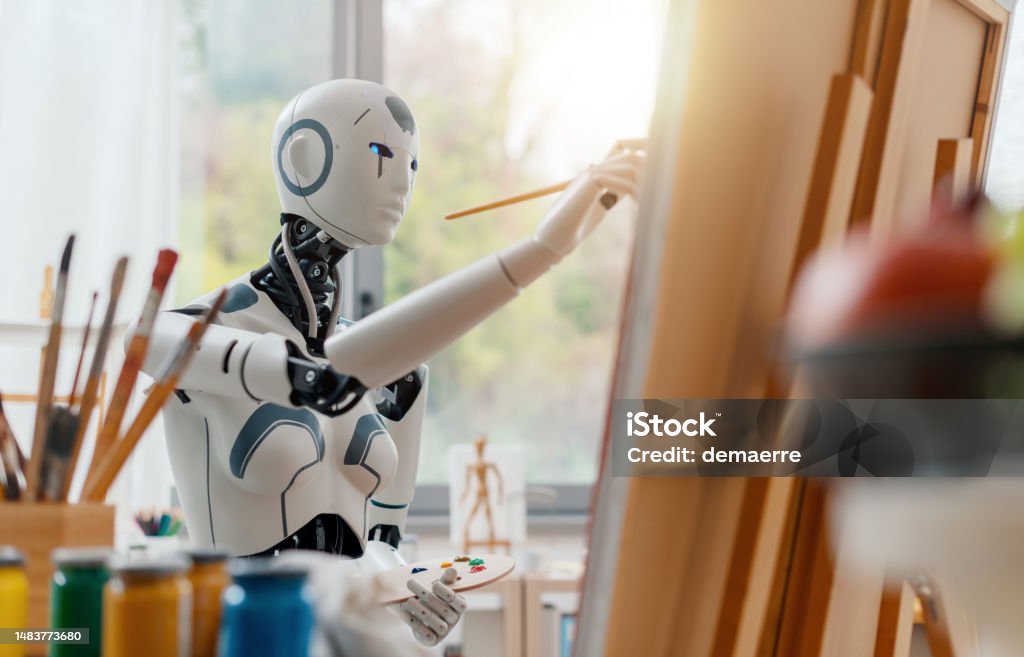“AI for Artists: Revolutionizing Creativity with Artificial Intelligence”
Introduction——————————————
In addition to revolutionizing sectors like healthcare and banking, artificial intelligence (AI) is also having a significant impact on the creative sector. AI has developed into a potent tool for artists, offering creative ways to realize their ideas, from creating original artwork to helping with design. In addition to sharing some of the best AI tools and applications that are supporting artists today, we also examine how AI is transforming the art world in this guide.
What is AI in Art?.
The use of artificial intelligence algorithms to produce, alter, or improve artistic works is known as AI in art. By simulating human creativity, these algorithms enable artists to create completely original works of art or incorporate distinctive components into preexisting pieces. AI expands your creative options, regardless of your background as a conventional artist, digital maker, or designer.
Benefits of AI for Artists.
- boost Creativity:
AI can be a creative collaborator, offering fresh patterns or design concepts that an artist might not have considered on their own. An artist’s creative horizons are widened by this collaboration, which facilitates style experimentation. - save time .
By automating repetitive processes like image scaling and filter application, AI systems free up artists’ time to concentrate on more intricate elements of their work. - New Revenue Streams:
Artists are increasingly selling digital works of art created by AI online. AI is used by certain artists to produce original works of art, giving conventional art forms a distinctive digital spin. - Personalized Art Creation:
By analyzing an artist’s style, AI may generate tailored recommendations that help artists establish a unique voice or brand.

Popular AI Tools for Artists.
Here are some AI-powered tools that artists can incorporate into their creative process:
- The Deep Dream Generator.
Use: Convert photographs into bizarre, dreamy pictures.
Features: Deep Dream Generator transforms photos into striking, original graphics and is well-known for its psychedelic effect. Artists can use the program to apply an abstract style to any image they upload.
Outbound Link: http://Deep Dream Generator. - DALL-E Use: AI that creates images based on textual descriptions.
Features: DALL-E allows artists to create images by merely typing in a description. Because artists can quickly explore a wide range of pictures, it’s perfect for brainstorming.
Outbound Link:http://DALL-E by OpenAI. - Runway ML Use: Real-time effects and editing for the production of images and videos.
Features: Runway ML is particularly well-liked by digital artists and video producers since it provides real-time tools for image creation, video editing, and masking.
Outbound Link:http://Runway ML.
- Artbreeder Use: A collaborative AI tool for producing original artwork.
Features: Artists may create unique, hybrid artwork by combining photos using Artbreeder. It’s great for creating abstract art, faces, and landscapes, providing painters with a never-ending source of ideas.
Outbound Link:http://Artbreeder.
How Artists are Using AI Creatively.
- Creating Art Forms.
By fusing different visual components, some artists utilize AI to create original styles. This procedure frequently produces new, creative works of art that combine the computational power of AI with human inventiveness. - Strengthening Conventional Arts.
Traditional media can be revitalized by AI. For instance, artists can bridge the gap between digital and real art by using AI to add textures or motions to paintings they have scanned. - Interactive Art Displays.
AI makes it possible to create interactive artwork at galleries and museums that reacts to the voices, gestures, and other inputs of visitors. The audience becomes involved in the artwork itself as a result of this captivating experience.
4. Creation of NFT Art.
A market for AI-generated art has emerged in the non-fungible token (NFT) space. AI is used by artists to produce original digital works that are then sold as NFTs, providing a new avenue for digital art revenue.

